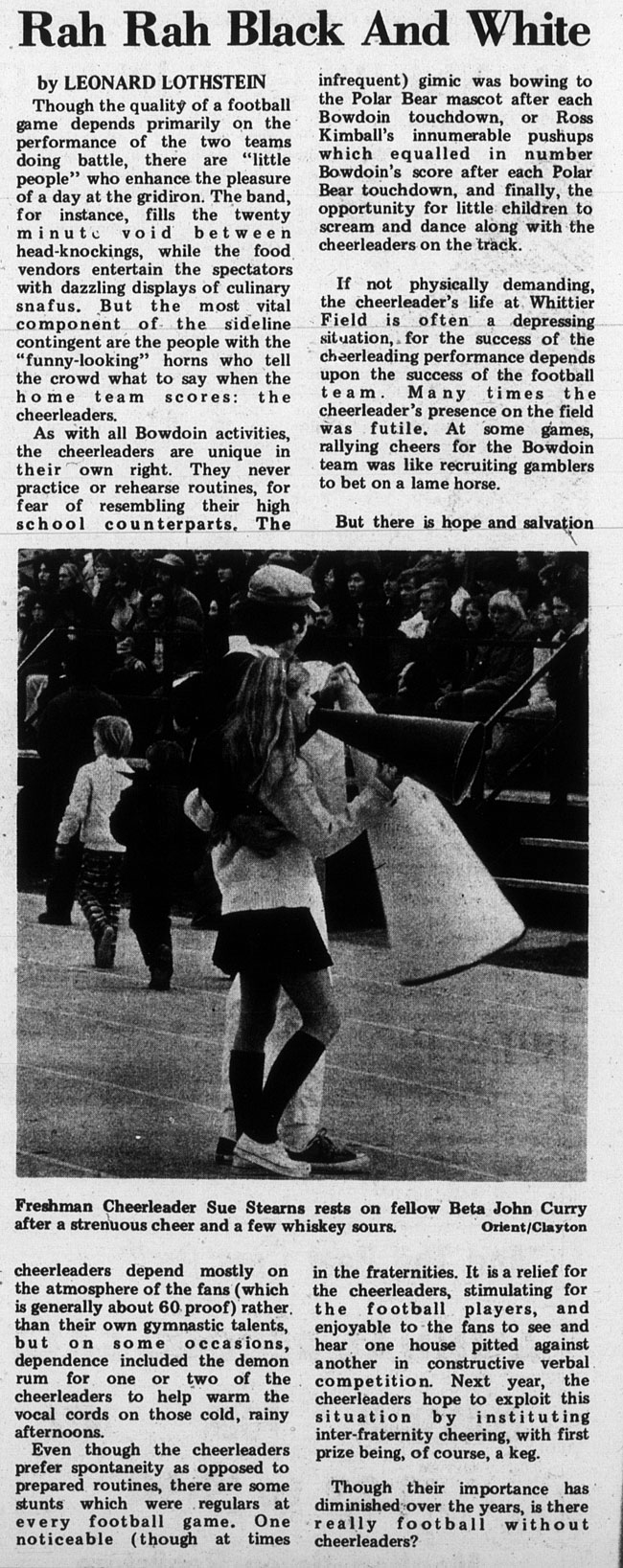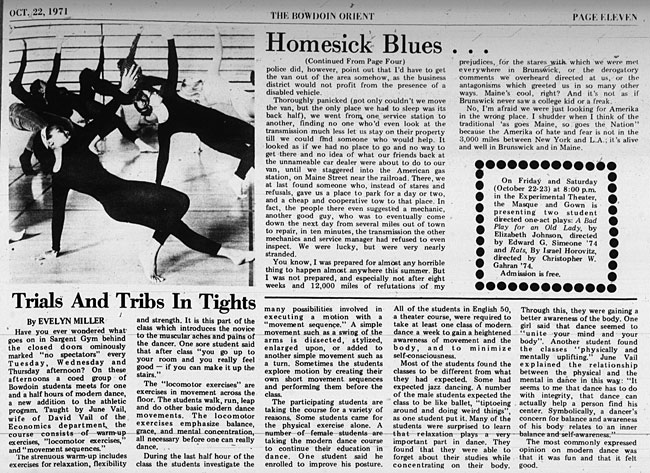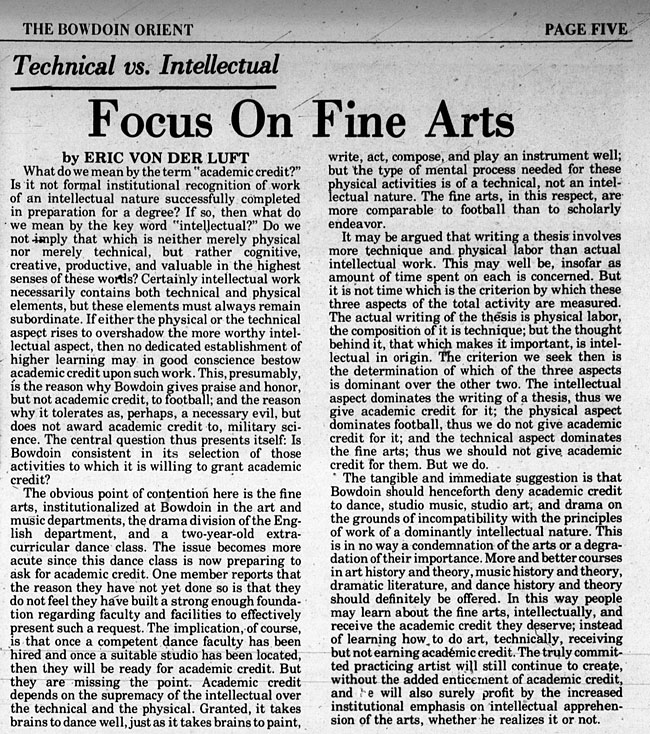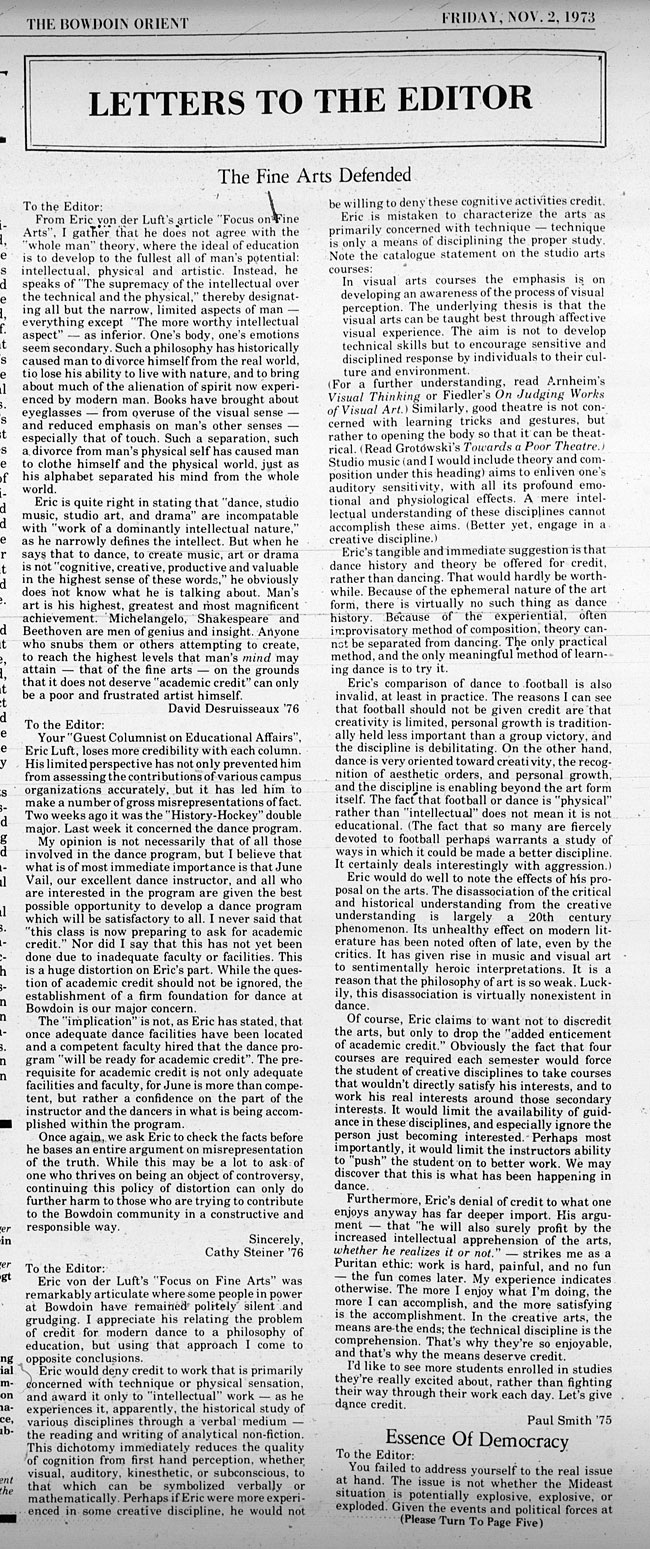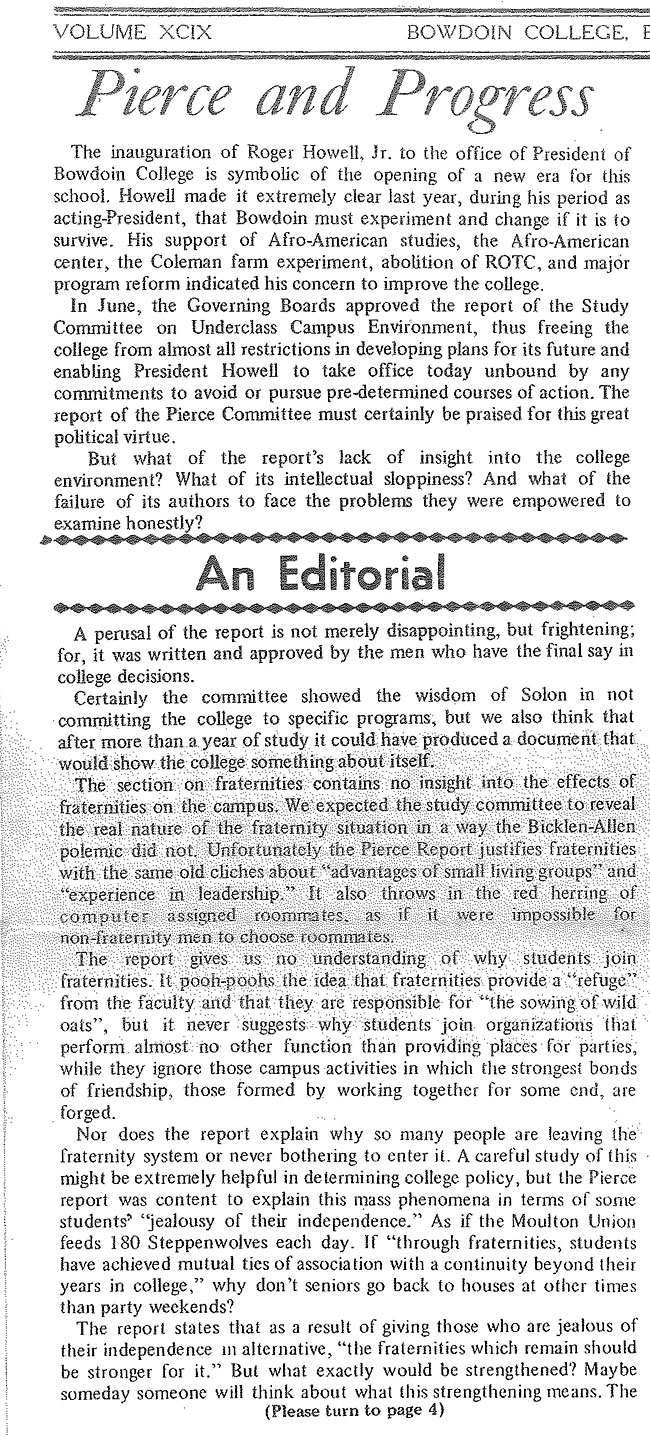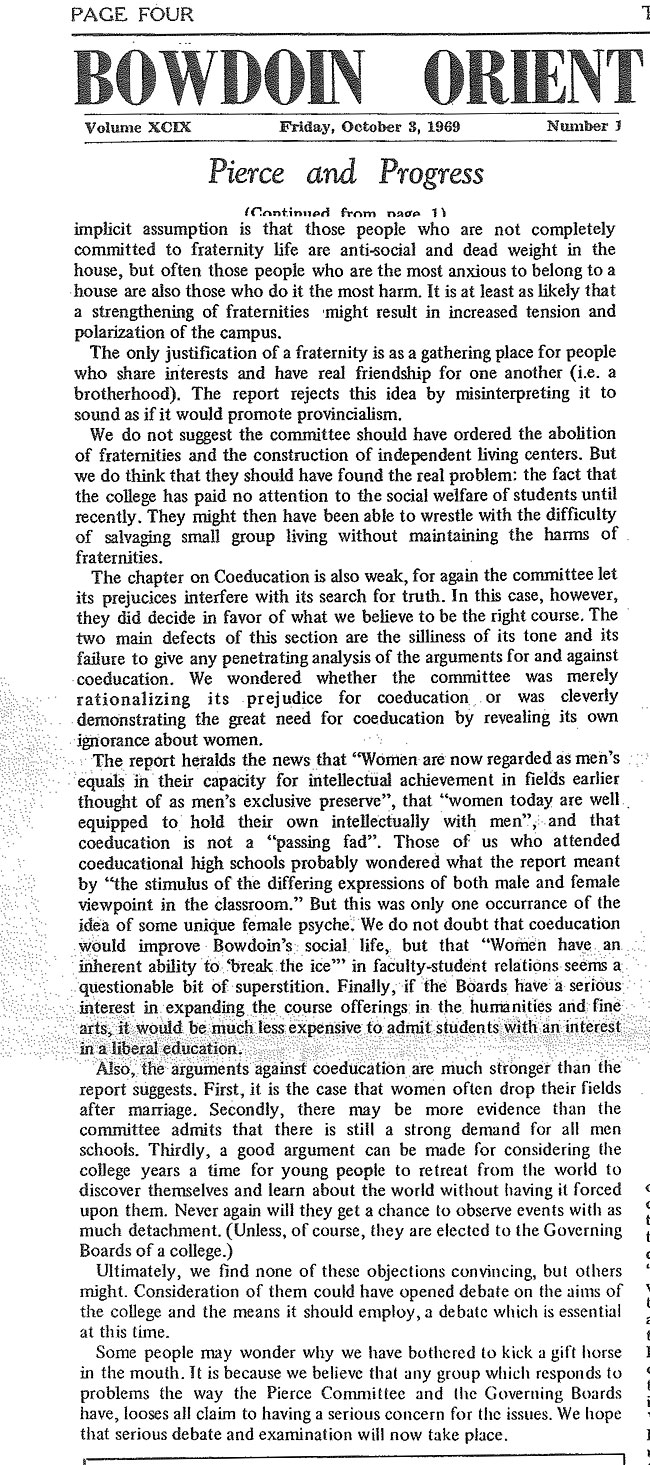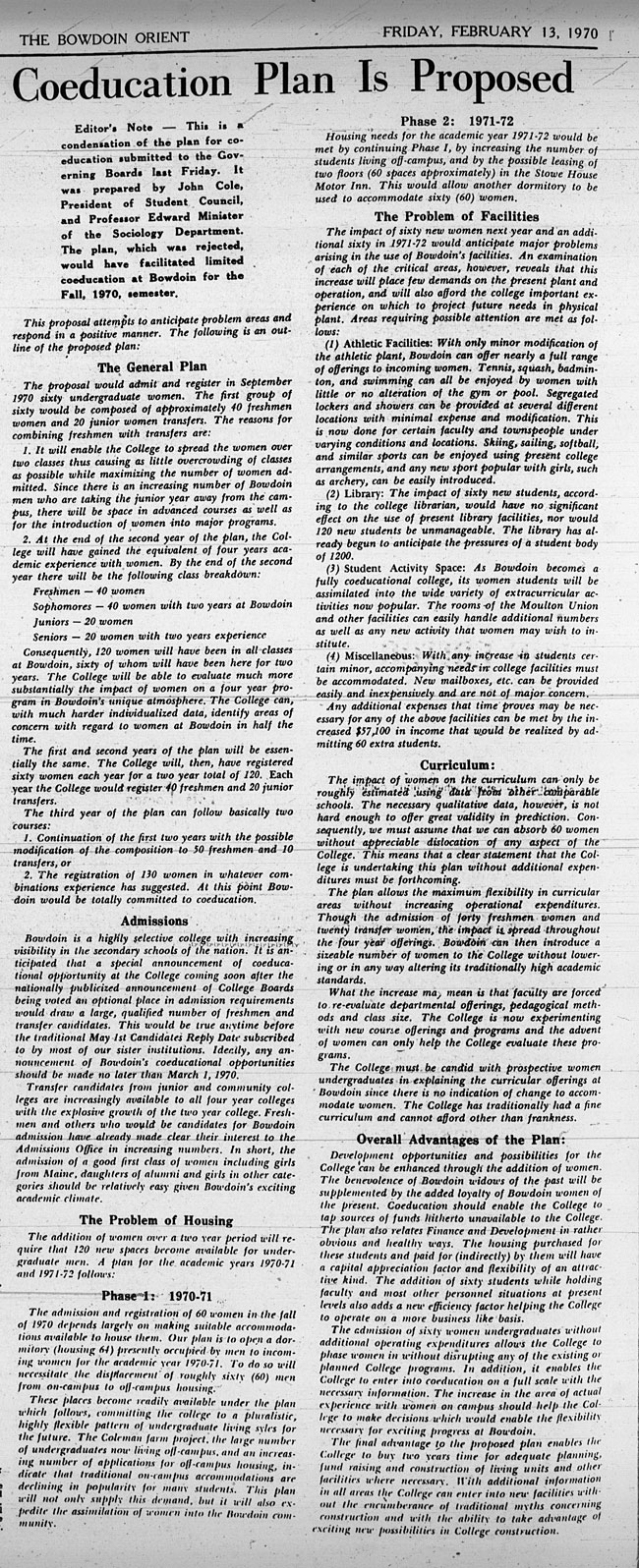Bowdoin Cheerleading
Orient Article: November 17, 1972
The first classes of female students at Bowdoin in the early 1970’s were made up of a fairly diverse group of women. Women’s athletic teams, like field hockey and tennis, were taking shape and creating distinctly female spaces for women on campus. The need for such spaces had been articulated by other women in the early classes, like the founders of the Bowdoin Women’s Association, which started the group in part as a response to this absence. What, then, are we to make of Bowdoin Cheerleading?
Bowdoin Cheerleading became an organized group before the arrival of female students on campus. Records have not been kept that indicate exactly when the all-male squad was formed. However, records indicate that Bowdoin Cheerleading went coed the same year that the college began accepting female students as part of the 12-College Exchange Program. Trish Luther and Sue Alvano, both interchange coeds, are believed to be the first females that joined the squad in the fall of 1969.
Various sources suggest that the first squad of coeds formed in 1972. The attached article [DocumentAG, 38] is a clipping from The Bowdoin Orient dated November 17, 1972. Although the author of the article seems to have a less-than-favorable view of Bowdoin Cheerleaders, he makes an interesting point. He states that “the success of the cheerleading performance depends upon the success of the football team.” Given this, how is one to consider Cheerleaders as separate from their male counterparts?
The fact is that groups of Bowdoin Cheerleaders during the early 1970’s did not seek a separate place, but rather worked to integrate themselves into a historically male institution by becoming part of male tradition through sports, particularly football. Records from some of the cheerleading squads in this time period describe how integrated the two groups were. The cheerleaders would travel with men to their away games to provide morale and support. Most of the funding they sought was to cover the expense of travel and food during these trips. They also requested funding in 1973 to purchase new uniforms since most of the uniforms the Cheerleaders had at the time were homemade.
It is important to mention that Cheerleaders did in fact exist outside of football. In 1973 there were two separate squads of cheerleaders, one for football and one for basketball. Records suggest that the squads eventually merged into one group. The Orient article also makes reference an intra-fraternity cheering contest that Cheerleaders planned to “exploit”. This contest was in fact sponsored by football among fraternities and other groups on campus during homecoming. The prize? A keg.
